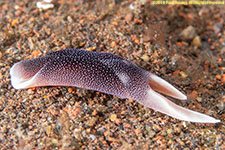 Lovely headshield slug, Chelidonura amoena
Lovely headshield slug, Chelidonura amoenaOver four hundred species of nudibranchs have been identified at Tulamben. We are not experts on these animals; if you find we have misidentified one, or can identify a specimen we could not, please let us know and we will correct it.
Headshield slugs have a well-developed head shield which is used to plow beneath the surface of the sand. Most have an internal shell.
 Lovely headshield slug, Chelidonura amoena
Lovely headshield slug, Chelidonura amoena
Most Sap-sucking slugs (Sacoglossa) are herbivorous. They have rolled rhinophores. Oral tentacles are small or absent, and gills are usually lacking. They feed primarily on green algae. Many have a symbiotic relationship with the chloroplasts extracted from the algae. Some species feed on nudibranch eggs.
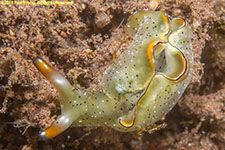 Ornate sap-sucking slug, Elysia marginata
Ornate sap-sucking slug, Elysia marginata
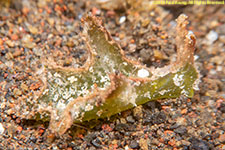 Shaggy Elysia, Elysia cf tomentosa
Shaggy Elysia, Elysia cf tomentosa
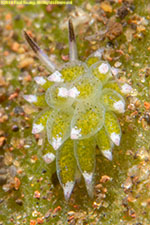
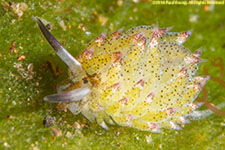
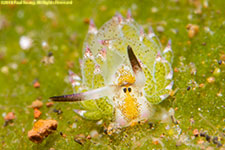 Kuro sap-sucking slug, Costasiella kuroshimae
Kuro sap-sucking slug, Costasiella kuroshimae
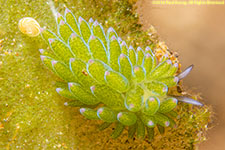 Purple-tipped Costasiella, Costasiella sp.
Purple-tipped Costasiella, Costasiella sp.
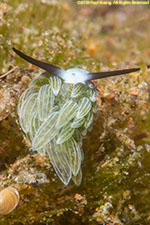 Rabbit sap-sucking slug, Costasiella usagi
Rabbit sap-sucking slug, Costasiella usagi
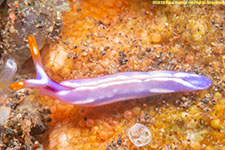 White-bump sap-sucking slug, Thuridella albopustulosa
White-bump sap-sucking slug, Thuridella albopustulosa
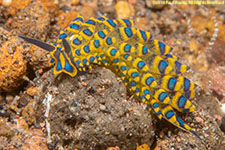 Ornate Stiliger, Stiliger ornatus
Ornate Stiliger, Stiliger ornatus
True sea slugs (nudibranchs) are carnivores. In most species the gills or branchial plumes are outside the body. All have rhinophores.
Dorid nudibranchs (Doridacea) have a mantle which overlaps the sides of the foot. Most have a ring of external branched gills surrounding the anus towards the back of the body. Some species instead have the gills located beneath the sides of the mantle. Most species can withdraw their rhinophores into a pocket beneath the skin.
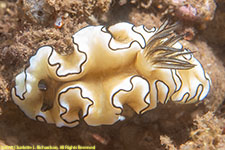 Dark-margin glossodoris, Glossodoris atromarginata
Dark-margin glossodoris, Glossodoris atromarginata
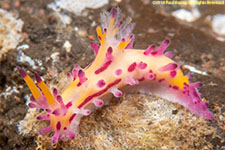 Hairy Norse god, Aegires villosus
Hairy Norse god, Aegires villosus
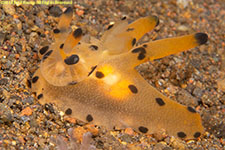 Black-tipped Thecacera, Thecacera sp.
Black-tipped Thecacera, Thecacera sp.
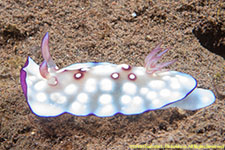
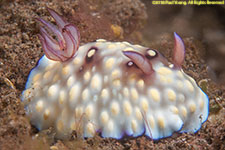 Bus stop chromodoris, Chromodoris hintuanensis
Bus stop chromodoris, Chromodoris hintuanensis
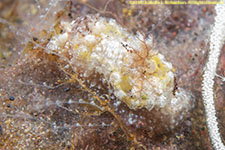 White Goniodoris, Goniodoris felis
White Goniodoris, Goniodoris felis
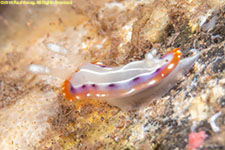 White-netted nudibranch, Chromodoris (Gonionbranchus) setoensis
White-netted nudibranch, Chromodoris (Gonionbranchus) setoensis
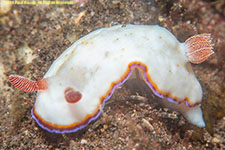 Precious chromodoris, Chromodoris (Goniobranchus) preciosa
Precious chromodoris, Chromodoris (Goniobranchus) preciosa
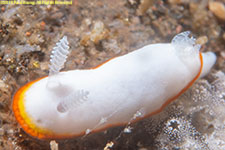 White gill chromodoris, Chromodoria (Goniobranchus) albonares
White gill chromodoris, Chromodoria (Goniobranchus) albonares
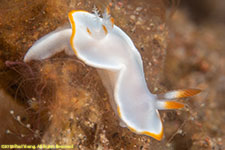 Cryptic thorunna, Thorunna furtive
Cryptic thorunna, Thorunna furtive
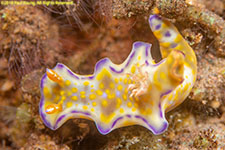 Purple-edged ceratosoma, Ceratosoma tenue
Purple-edged ceratosoma, Ceratosoma tenue
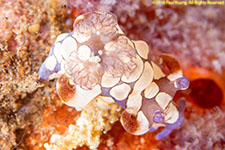 Jester trapania, Trapania scurra
Jester trapania, Trapania scurra
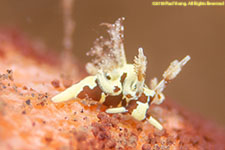 Brown-spotted Trapania, Trapania cf toddi
Brown-spotted Trapania, Trapania cf toddi
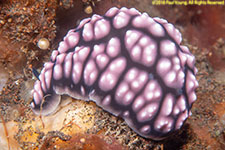 Pimpled phyllidiella, Phyllidiella pustulosa
Pimpled phyllidiella, Phyllidiella pustulosa
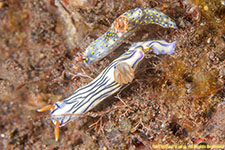 Colorful (painted) hypselodoris (top), Hypselodoris infucata, and maritime hypselodoris, Hypselodoris maritima (bottom)
Colorful (painted) hypselodoris (top), Hypselodoris infucata, and maritime hypselodoris, Hypselodoris maritima (bottom)
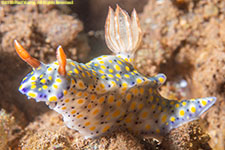 Fire Hypselodoris, Hypselodoris infucata
Fire Hypselodoris, Hypselodoris infucata
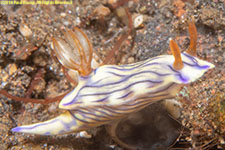 West wind hypselodoris, Hypselodoris zephyra
West wind hypselodoris, Hypselodoris zephyra
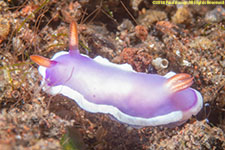
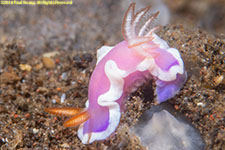 Bullock's Hypselodoris, Hypselodoris bullocki
Bullock's Hypselodoris, Hypselodoris bullocki
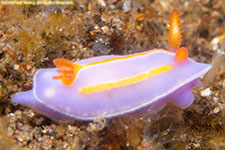
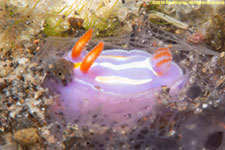 Three-lined pectenodoris, Pectenodoris (Mexichromis) trilineata
Three-lined pectenodoris, Pectenodoris (Mexichromis) trilineata
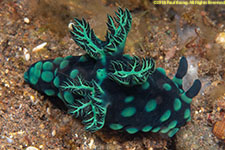 Crested nembrotha, Nembrotha cristata
Crested nembrotha, Nembrotha cristata
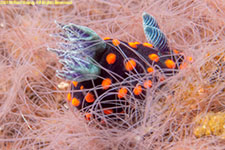 Pale-gill Nembrotha, Nembrotha cf kubaryana
Pale-gill Nembrotha, Nembrotha cf kubaryana
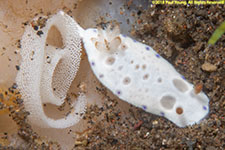 Lacuna Hypselodoris, Hypselodoris lacuna, with egg mass
Lacuna Hypselodoris, Hypselodoris lacuna, with egg mass
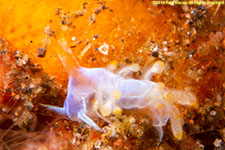 Orange-Ceras Trinchesia, Trinchesia sp.
Orange-Ceras Trinchesia, Trinchesia sp.
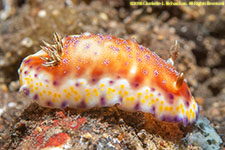
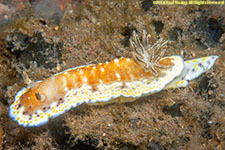
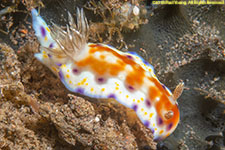 Collingwood's chromodoris, Chromodoris collingwoodi (Goniobranchus collingwoodi)
Collingwood's chromodoris, Chromodoris collingwoodi (Goniobranchus collingwoodi)
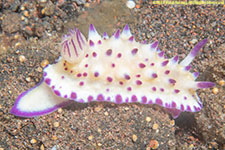 Bumpy mexichromis, Mexichromis multituberculata
Bumpy mexichromis, Mexichromis multituberculata
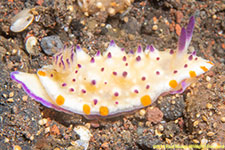 Orange-barred mexichromis, Mexichromis macropus
Orange-barred mexichromis, Mexichromis macropus
Dendrontid nudibranchs (Dendronotidae) have elongated bodies, often with numerous branching cerrata on their dorsal side which lack extensions from their digestive gland. The head has an oral veil having branching extensions. The lamellate rhinophores are surrounded by a sheath and branched extensions.
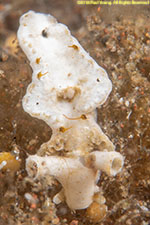
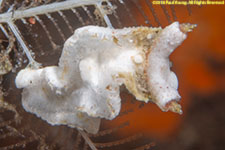 Flat-back Lomanotus, Lomanotus sp.
Flat-back Lomanotus, Lomanotus sp.
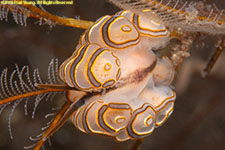
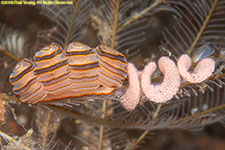 Donut nudibranch, Doto greenamyeri, right: laying eggs
Donut nudibranch, Doto greenamyeri, right: laying eggs
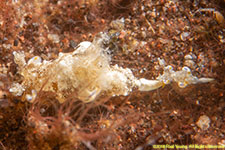 Trapania palmula, small juvenile trailing adult
Trapania palmula, small juvenile trailing adult
Arminid nudibranchs (Arminidae) are the smallest suborder of nudibranchs. Most have a cephalic veil and contractile rhinophores without sheaths or pockets. Gills may be present or absent, They feed on soft corals and sea pens or bryozoans. We did not photograph any in Tulamben.
Aeolid nudibranchs (Aeolidida) have elongated, tapering bodies with cerrata containing cnidosacs. This is the second largest nudibranch suborder. They lack distinct gills and use cerrata for respiration and defense.
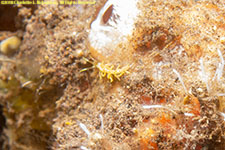 Yellow-back Trinchesia, Trinchesia sp.
Yellow-back Trinchesia, Trinchesia sp.
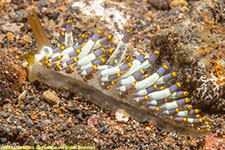 Yamasu's cuthona, Cuthona yamasui? Cuthona kanga? Banded trinchesia, Trinchesia sp.?
Yamasu's cuthona, Cuthona yamasui? Cuthona kanga? Banded trinchesia, Trinchesia sp.?
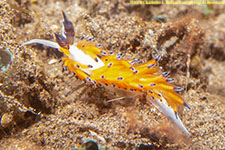 Ringed favorinus, Favorinus tsurganus
Ringed favorinus, Favorinus tsurganus
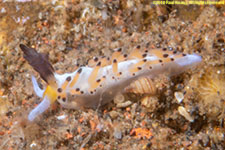
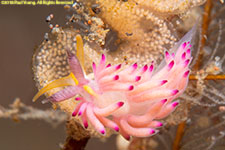 Wonderful favorinus, Favorinus mirabilis
Wonderful favorinus, Favorinus mirabilis
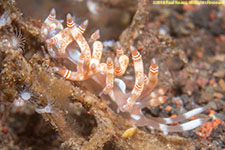 Double-ringed flabellina, Flabellina (Samla) bilas
Double-ringed flabellina, Flabellina (Samla) bilas
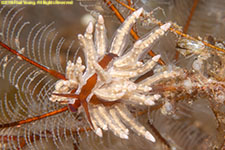 Brown-stripe Eubranchus, Eubranchus sp.
Brown-stripe Eubranchus, Eubranchus sp.
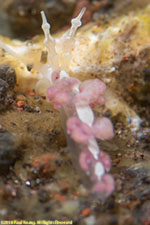 Japanese favorinus, Favorinus japonicus
Japanese favorinus, Favorinus japonicus
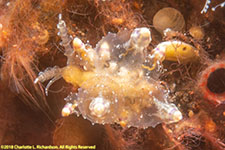 Swollen Eubranchus, Eubranchus sp.
Swollen Eubranchus, Eubranchus sp.
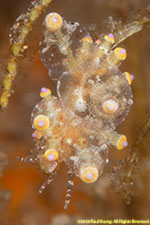 Ocellated eubranchus, Eubranchus ocellatus
Ocellated eubranchus, Eubranchus ocellatus
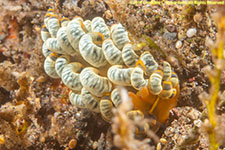
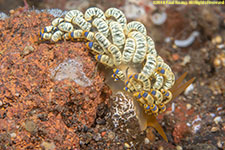 White-band Trinchesia, Trinchesia sp.
White-band Trinchesia, Trinchesia sp.
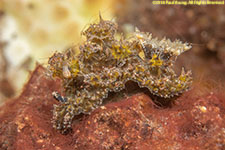 Moloch miamira, Miamira moloch
Moloch miamira, Miamira moloch
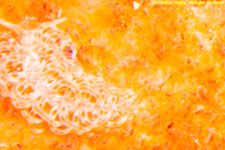 Red sponge noumeaella, Noumeaella sp.
Red sponge noumeaella, Noumeaella sp.
Unknown:
egg veils:
©2019, 2020, 2023, 2024 Mermaid Underwater Photographic. All Rights Reserved.
Contact us at mermaid@underwater.org.
Last modified 30 October 2024